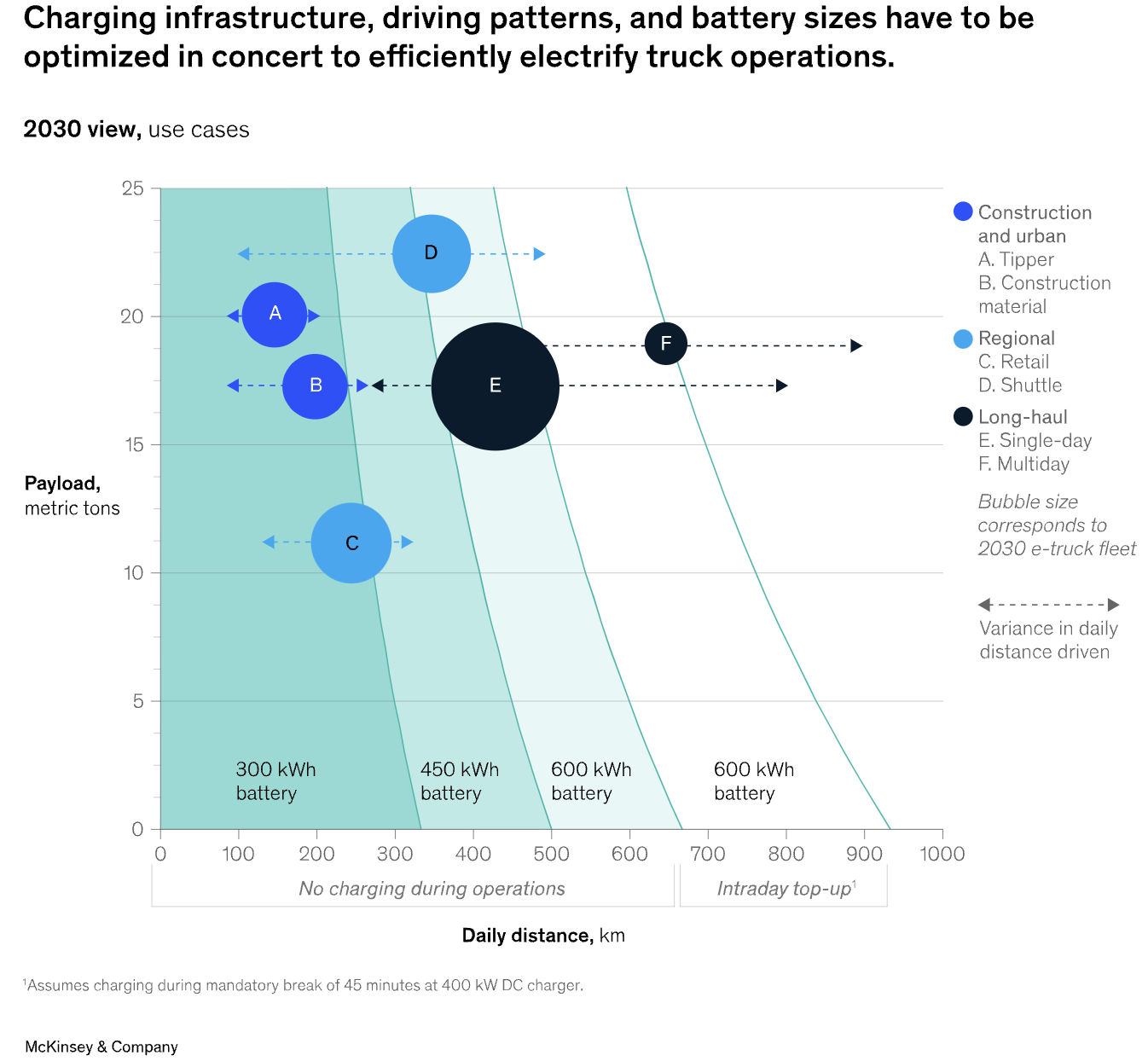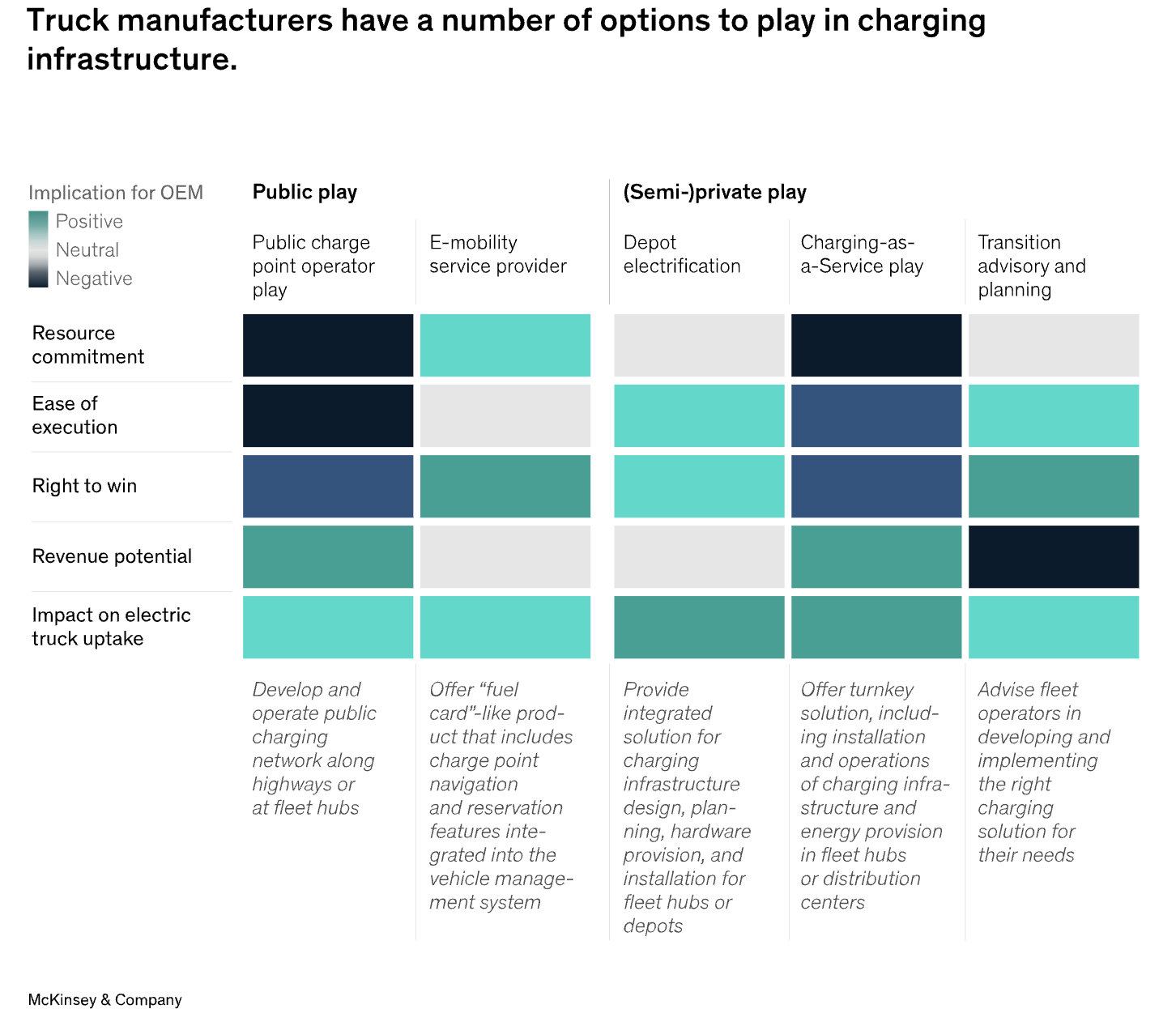Charging infrastructure has become a crucial aspect of electric trucking. Companies are vying to provide comprehensive solutions, but significant challenges related to vehicles, charging networks, and the electric grid still need to be addressed at scale. According to McKinsey, expanding electric trucks will necessitate a robust charging network, particularly in Europe, where an estimated 300,000 public and private charge points will be needed by 2030, compared to just 10,000 today.
Building this infrastructure will be a massive undertaking. By 2040, around €40 billion in capital investment will be required, including €7 billion by 2030. However, less than a quarter of this has been publicly committed. Energy consumption for these networks is expected to reach 20 terawatt-hours annually by 2030—about 0.5% of Europe’s total electricity demand—putting additional pressure on an already congested grid.
Despite these challenges, the opportunity is vast. With no dominant players yet in the electric truck charging market, various industries have a chance to shape the ecosystem, creating new business models or forging strategic partnerships.
Electric Truck Use in Europe
The initial wave of electric trucks in Europe will focus on single-day travel, such as distribution routes, municipal services, intermodal shuttles, and short hub-to-hub trips. These trucks will mostly charge at their depots overnight or during operational downtimes with fast chargers. Over 50% of European electric trucks will follow these predictable patterns and won’t require public charging.
An additional 40% will engage in hub-to-hub transport of goods from 250 to 800 kilometers, where public charging will become more necessary. The final 5% will involve long-haul, multiday travel, the slowest segment to electrify. These trucks will depend heavily on public charging infrastructure, and their numbers will grow as the infrastructure improves.
However, Europe’s logistics industry presents complications. Many fleets operate on short-term contracts, requiring flexibility in vehicle use and charging infrastructure planning.

Charging Infrastructure Development
The first phase of Europe’s charging infrastructure will focus on private fleet depots and semi-public hubs. By 2030, 90% of charging stations will be located in or near industrial and logistics hubs, with an investment of €5.5 billion. These stations will serve the distribution and hub-to-hub use cases for early electric trucks, covering 75% of the electricity demand.
Public charging infrastructure, in contrast, will develop more slowly. By 2030, Europe will have just 4,000 public overnight charging points and 12,000 fast-charging points, requiring an investment of €1.5 billion. After 2030, public charging networks will expand to support long-haul electric trucks, with an estimated 100,000 public charging points by 2040. These networks will be shaped by regulations like the EU’s Alternative Fuels Infrastructure Regulation.

Key Challenges
Several major challenges must be addressed before the electric truck market can fully scale.
- Grid Upgrades: Many fleet hubs need grid upgrades to support large-scale electric truck charging, particularly with fast chargers. Lead times for these upgrades can take months or years. Fleet operators could adopt smart charging strategies, battery storage systems, and microgrids to minimize grid strain.
- Financing: Charging infrastructure requires significant capital investment, which many fleet operators, particularly smaller ones, cannot afford. Financing options are limited, and new public or private funding solutions will be needed. Aggregators like Charge Point Operators (CPOs) could attract private sector investment by managing infrastructure across multiple locations.
- Approval Processes: Installing charging stations requires approval from various authorities, often causing delays. Standardizing and streamlining approval processes will be essential to accelerate deployment.
- Space Constraints: Many fleet hubs and truck stops already face space limitations, which electric charging requirements will exacerbate. Intelligent planning and reservation systems can help optimize space use, but long-term expansions will be necessary.
- Market Structure: Europe’s fragmented logistics industry, relying on short-term contracts, complicates the planning and operation of charging infrastructure. Extended contract durations and shared charging parks could help address these challenges.
According to McKinsey, solving these issues will be crucial for the successful rollout of electric trucks and charging infrastructure across Europe, providing a pathway toward a more sustainable transportation sector.
Source: McKinsey





